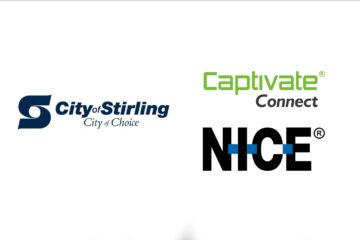Your on hold system is often the first touchpoint a customer will have with your business- and as we all know, first impressions count. Should a customer call your business for information or support, it is important to greet them in a memorable manner, setting the foundations for a positive customer experience and long-term customer relationship.
In order to make this first impression, it is important to take advantage of all of the tools at your disposal. However, if you have the bare minimum- a business phone system- you can begin to make a difference.
Your messages on hold, IVR, and voicemail messages are able to be self-recorded in order to save on cost. Here are some handy tips on how to make your recordings the best that they can be.
Keep it quiet… (Soundproof your recording space)
Background noise- it’s everywhere. In the office, it could be keyboards clicking, the printer whirring, or coworkers chatting. When you record your on hold messages, promotions, and IVRs, ensure that you are in a space free from distractions and noise- this could be an empty conference room, a room full of adjustable whiteboards to put in front of the window to dampen the noise. or even under the desk (yes, really). While you will not get the same quality of audio as you would when recording in a professional studio setting, by minimising outside interference you can create a clear sounding audio file for your phone system.
Finding the right Mic for the job
Ensuring that you have a top-quality audio recording is important in the development of business perception. A crackly, hard to make out voice asking a customer to wait will lead to increased frustration and dissatisfaction. One way to bypass this threat is by ensuring that audio is recorded on a high-quality microphone. In a pinch, the webcam on your desktop will work passably for a zoom call, but adding a layer of professionalism to your recording could be the difference between customer satisfaction, or a lost call.
It’s Wingardium LeviOsa, not LevioSA (Pronunciation matters!)
Similarly to the last two points, if your audio is unintelligible then it is useless to your caller. The point of your on hold messages should be to add value to the customer’s experience, rather than confuse or annoy them. Whilst recording your messages, be sure to annunciate correctly, speak clearly, and finish all words before running into the next. If you are in Australia (like us!), you are likely to inflect up at the end of a sentence, so take note of your traditional speaking patterns and ensure that you are completely understandable and universally appealing. Captivate uses professional voice artists to voice scripts who are trained in audio quality. Find out more here!
Making it pretty (edit edit edit!)
Overall, it is important to make your audio experience pleasant for the caller. They don’t want to hear you floundering for the right words, beginning sentences with an “uuuuh”, or have their ears blasted with audio pops or balance issues. Editing is a crucial part of audio production; ensuring that audio is the correct volume, removing any strange pauses, and fixing up any mistakes leads to a more polished overall experience.
Go forth with your audio production and remember; soundproof your space, make sure your microphone is up to scratch, pronounce all of your words, and edit well. Or, if all of this seems too much, call Captivate Connect on 08 9368 7577 and we will sort it all out for you!


